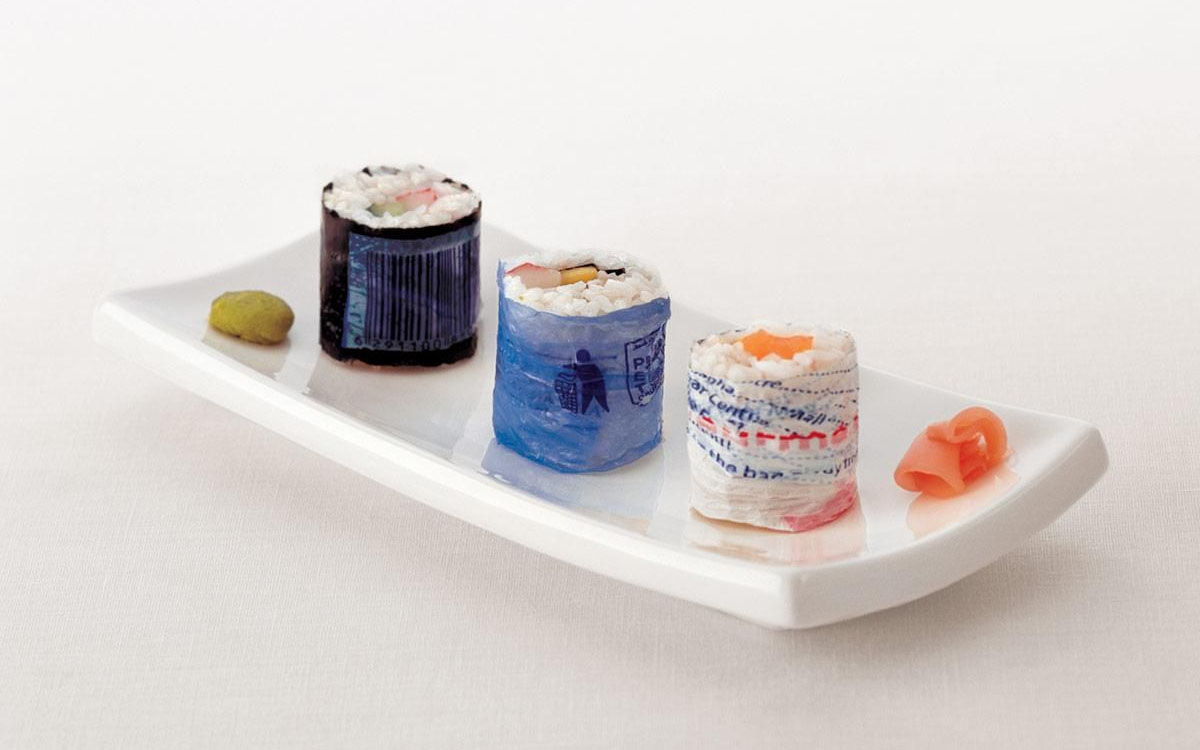how do we clean up the world’s massive plastic waste problem?

Plastic, the material that surrounds us whether we know it or not in the modern world, is now public enemy number one, and not without reason. Since we use it for almost everything, from construction materials, to packaging, to food storage, to single use utensils, we’ve made what can only be described as a mind-boggling amount of it. And because we haven’t really bothered to properly recycle or dispose of most of it, and it can take between a decade and a thousand years to decompose, it’s contaminating our oceans and just about everything else, so much so that it will show up in the fossil record eons from now. Clearly, something has to be done to get a handle on this environmental disaster, and soon.
As noted, the biggest part of the problem is that even plastic forks and straws meant for one time use take ten years to break down, and when they do, they give off greenhouse gases like carbon dioxide and methane, contributing to global warming. Likewise, water bottles casually tossed away, won’t break down for some 450 years. Plastic bags and packaging take between 500 and 1,000 years to decompose. Clearly, we need to start making a lot more biodegradable plastics, right? After all, we have the technology and you can already find biodegradable plastic in a store near you. In the meantime, we could use bacteria that eats plastic to dissolve our massive pollution problem with some innovative logistics.
the problem with biodegradable plastics
Unfortunately, biodegradable plastic won’t save us because it’s still far from easy to break down and will still pollute the oceans. This is in part because we don’t want to make plastics ready to come apart like wet tissue paper at the slightest hint of light and heat. Consider that almost half of all modern cars are assembled from these materials, including some components crucial for your safety in an accident. Imagine cars rendered too dangerous to drive in the heat and snow, as well as busses and other public transport. It would be disastrous. And not using plastics will make modern vehicles heavier and less fuel efficient, adding to their carbon footprint.
Biodegradable plastics are currently used mostly in packaging and bags, and only break down in heat close to 50 C and exposure to in sunlight. When garbage heavy with them makes its way to the ocean, it sinks, protected from UV rays by light scattering through the water and cooled on its descent. From there, we’d still be looking at centuries for it to degrade while bubbling out even more greenhouse gases for the oceans to hold. We’d need to seriously consider a plastic substitute, which isn’t going to be easy since the market for these materials is over $1 trillion worldwide. Replacing them with a currently uncertain set of materials is going to be extremely problematic, logistically and financially.
can bacteria help us eat our way out of plastic pollution?
So, what about just using plastic-eating bacteria to just munch away at our most problematic garbage? While popular science sites seemed certain this is how we’ll get rid of plastics in the oceans, we’re still very far from doing it and don’t know how well it would work in the real world. Part of the problem is that there are numerous types of plastics and we’re not sure how much of each type they’ll eat, or how effective they would be on the immense quantities of material we’d need them to clean up, mostly because we’re still trying to understand how they’re eating plastic and how much they eat versus how much the plastics we think they’re digesting are naturally degrading over the time period we think the bacteria were eating them.
Likewise, these microorganisms would need to be carefully controlled since, again, plastics are everywhere and the last thing we need is them getting into our cars, busses, trains, and planes, and eating important components while we’re still using them. Limiting them to specialized labs and disposal centers would be a top priority, otherwise we’d have to constantly inspect virtually every vehicle currently in use for a colony of plastic eaters, and trying to engineer them to be more effective could easily backfire. They would also pose a health hazard if they start getting into food packaging and allowing oxygen into what should be airtight containers.
so, is there a good solution to the plastic garbage problem?
Sadly, there really isn’t. We use so much plastic for so many important things, and we will need to find alternatives if we ever want to phase them out. One could say that at this rate, we’ll end up eating our own pollution, but that’s already happening, albeit at negligible levels. This is why people are so concerned about what to do next and looking for easy and quick fixes to a problem that seems to be literally everywhere while all of these quick and easy fixes pose problems for which we currently don’t have solutions. Of course, all that means is that we need to start a dialog on how to better manage plastics going forward and come up with concrete implementation plans and creative solutions.





